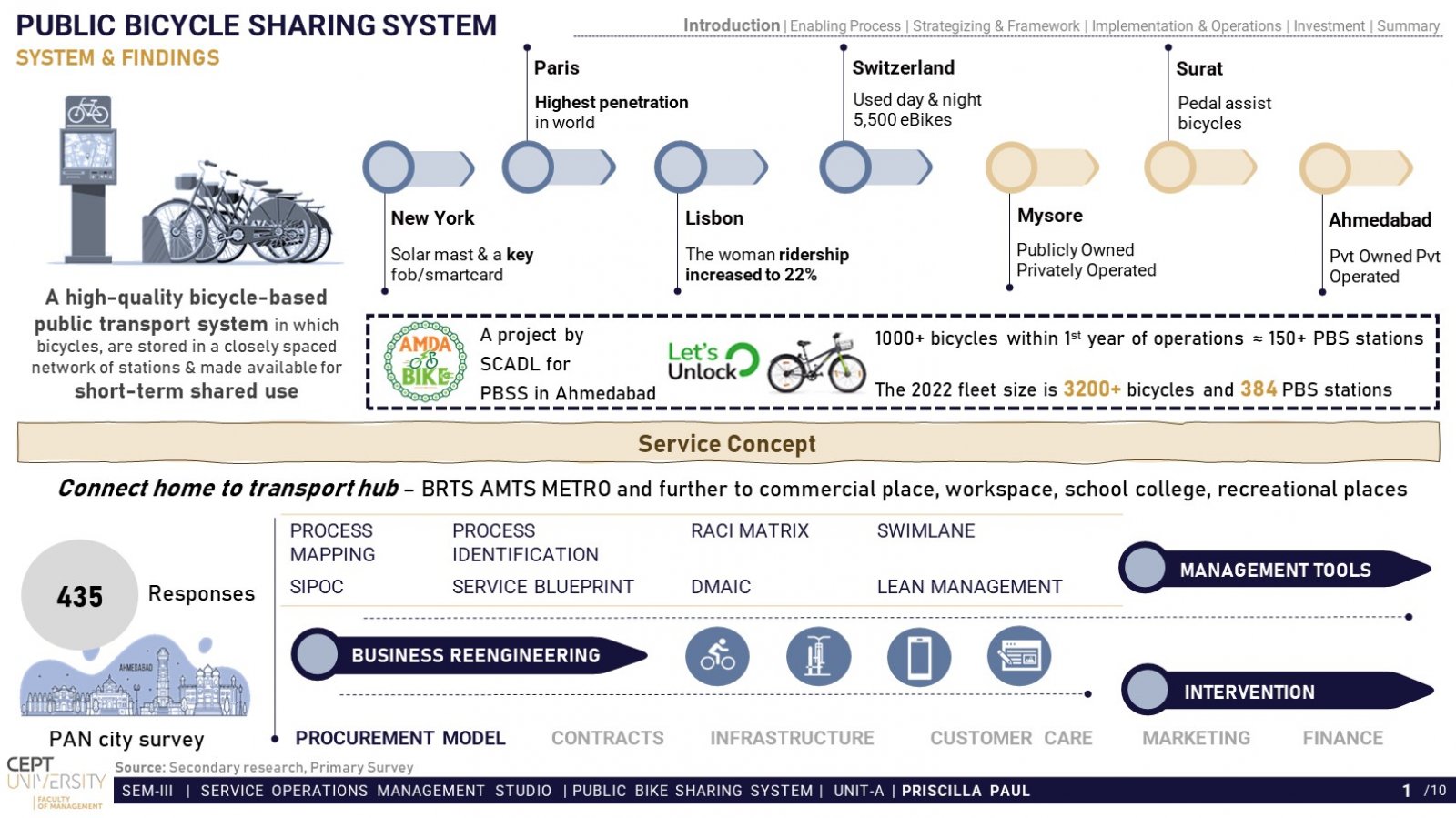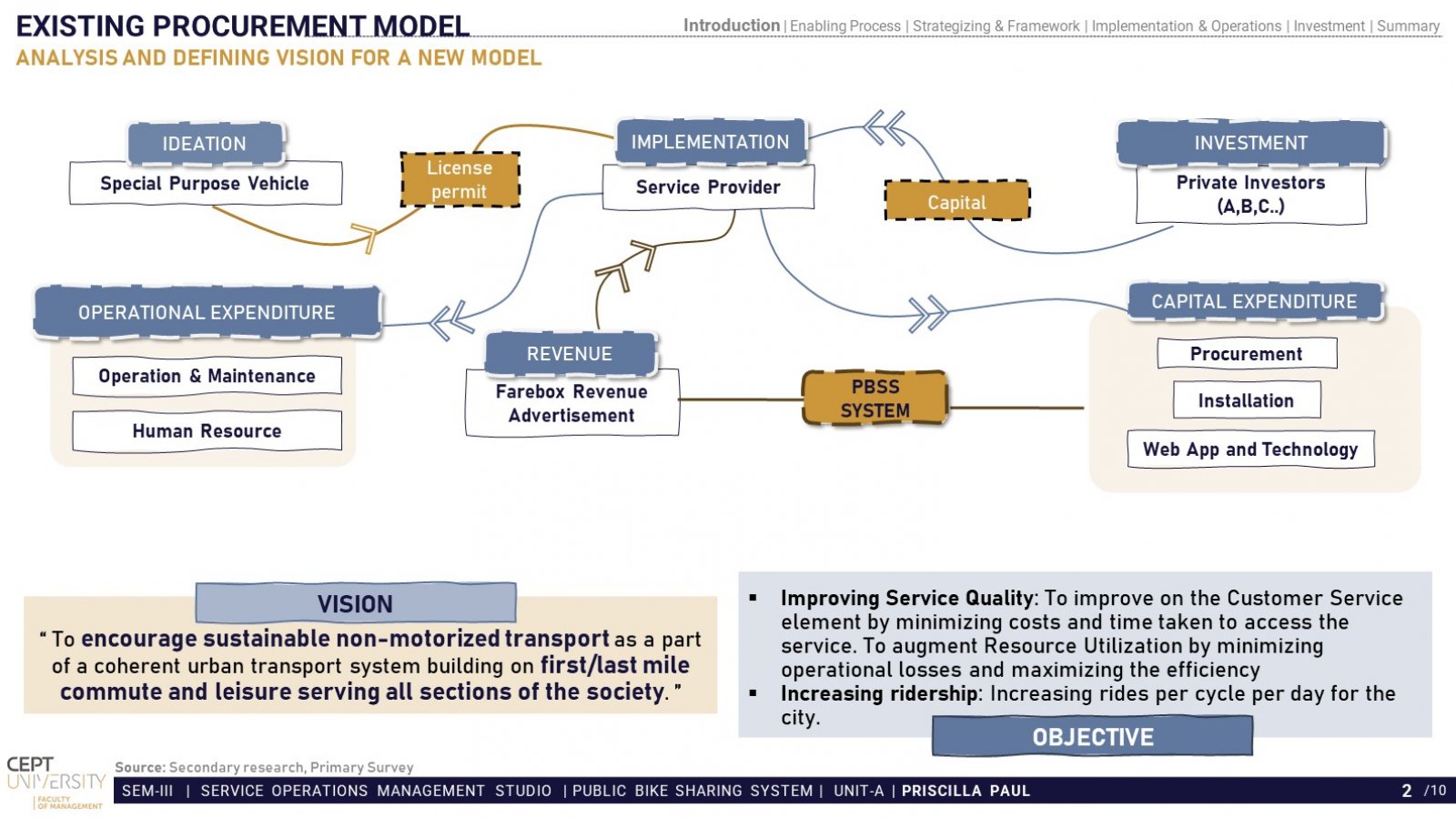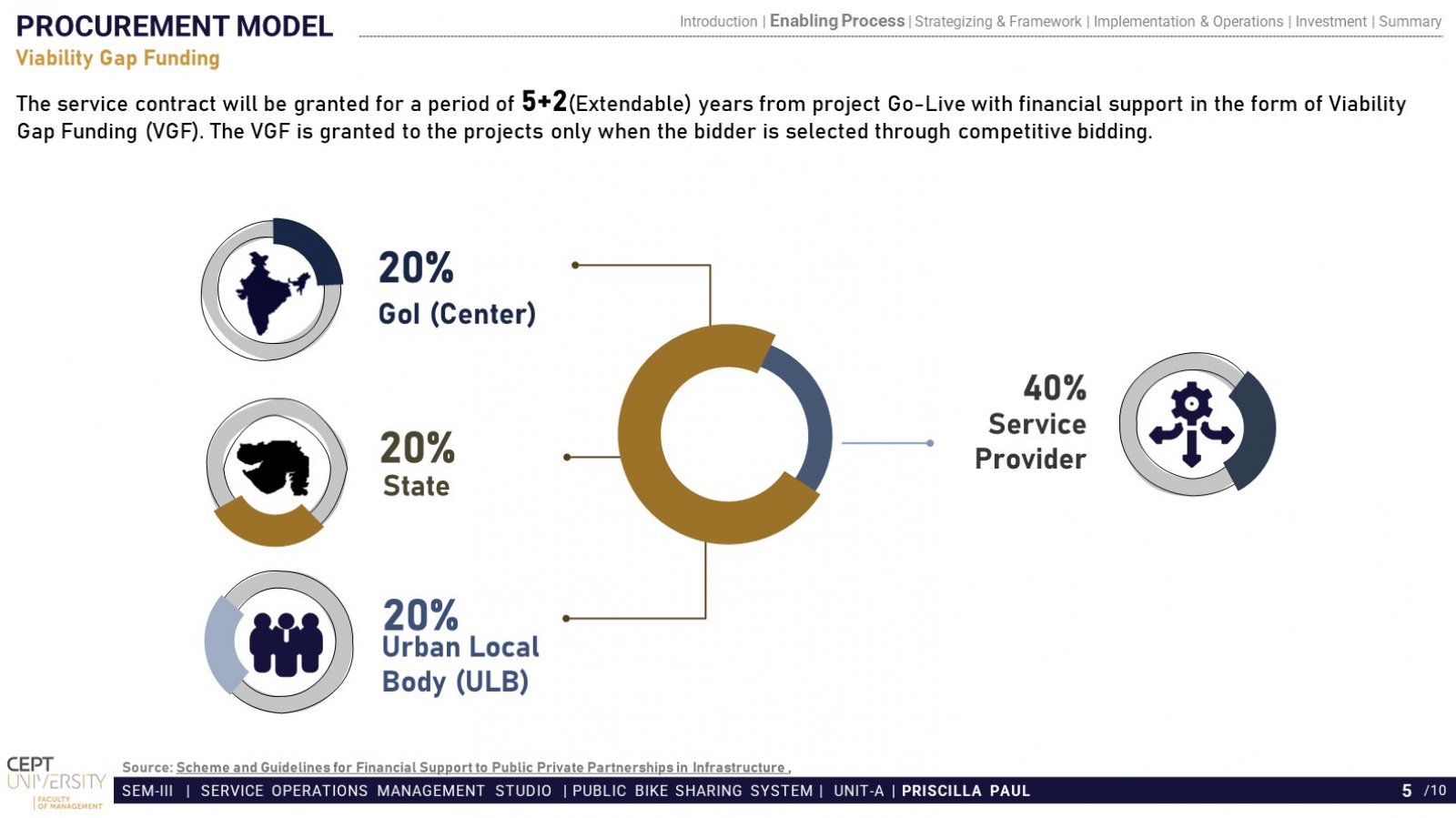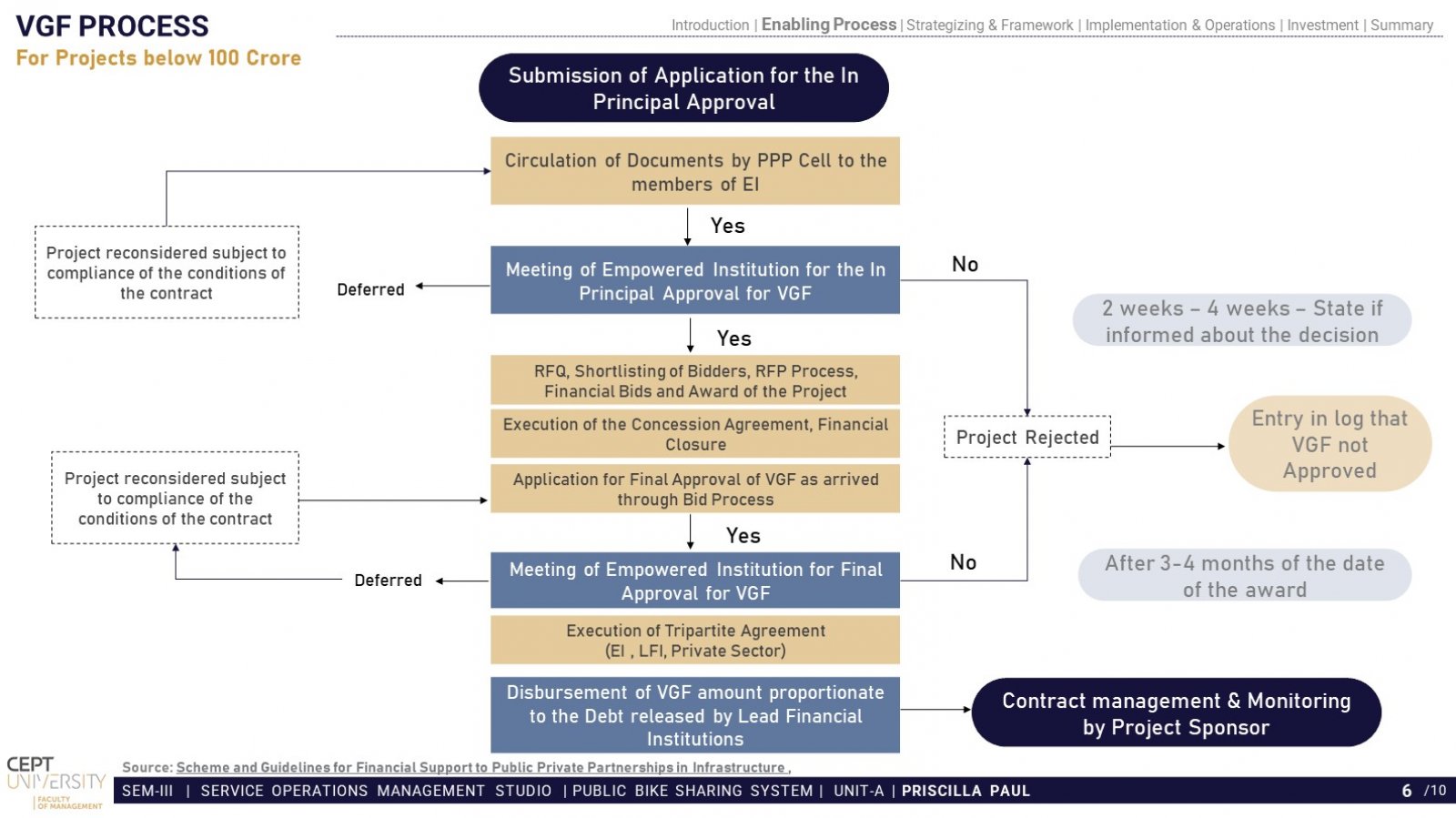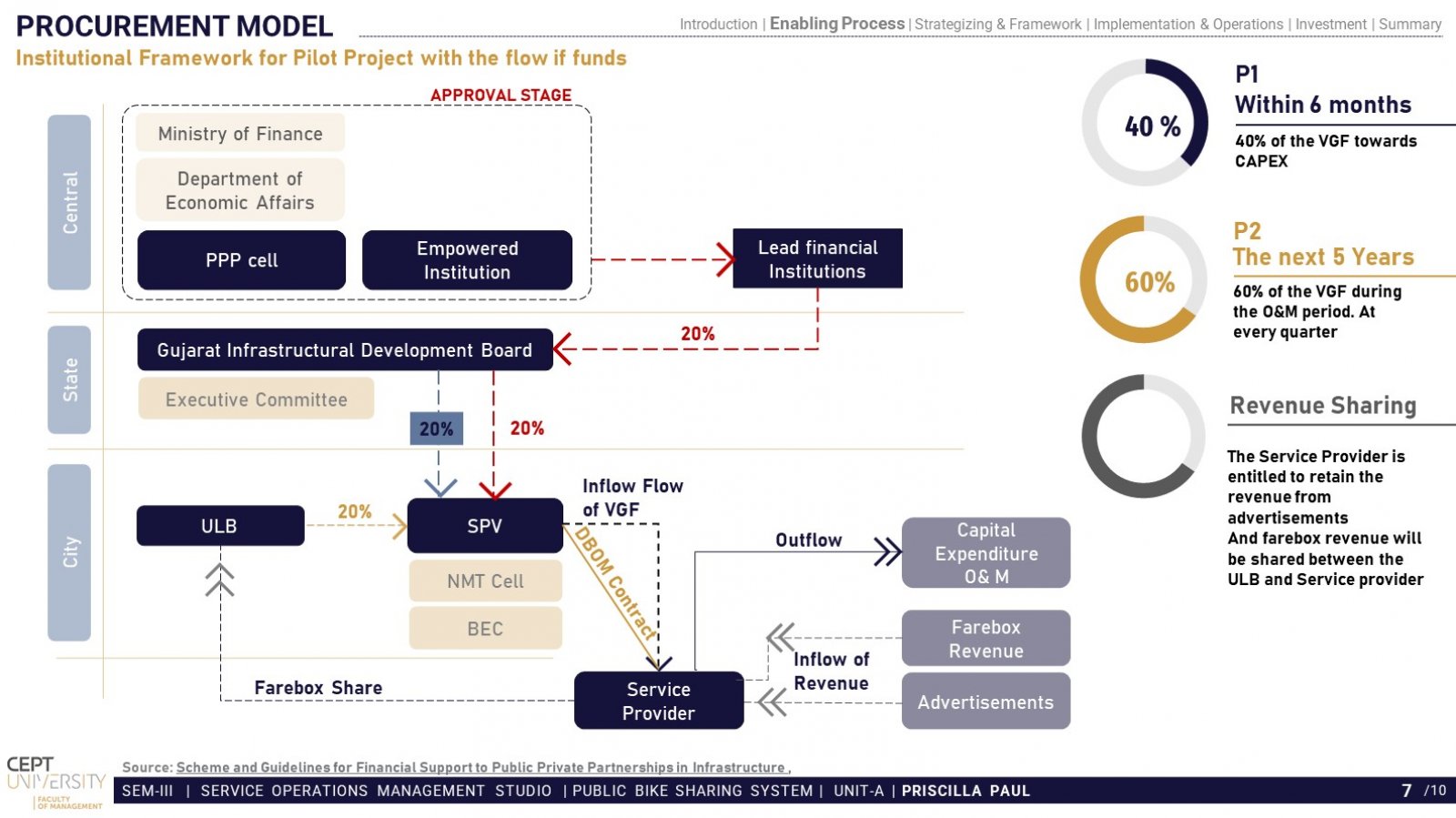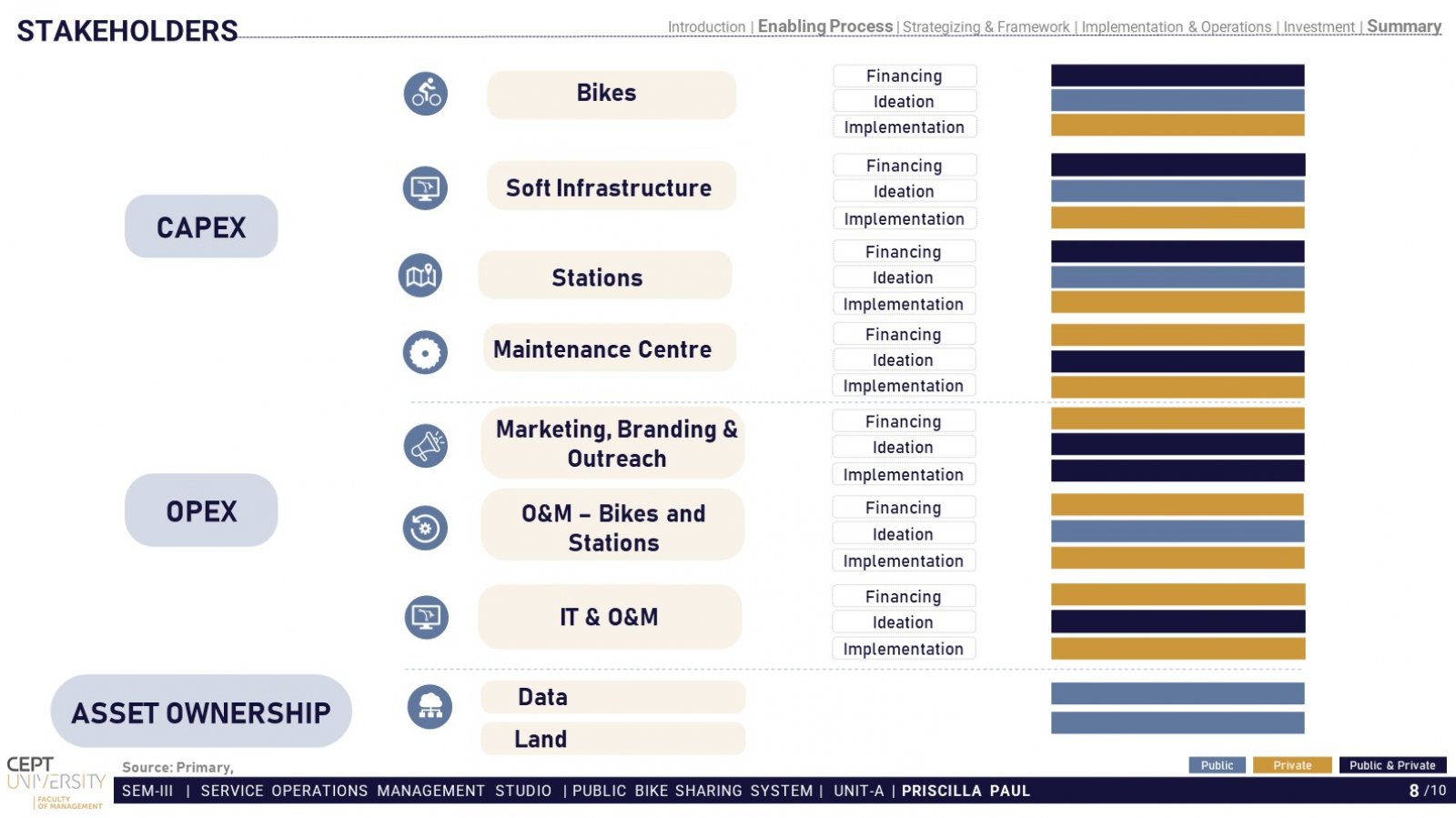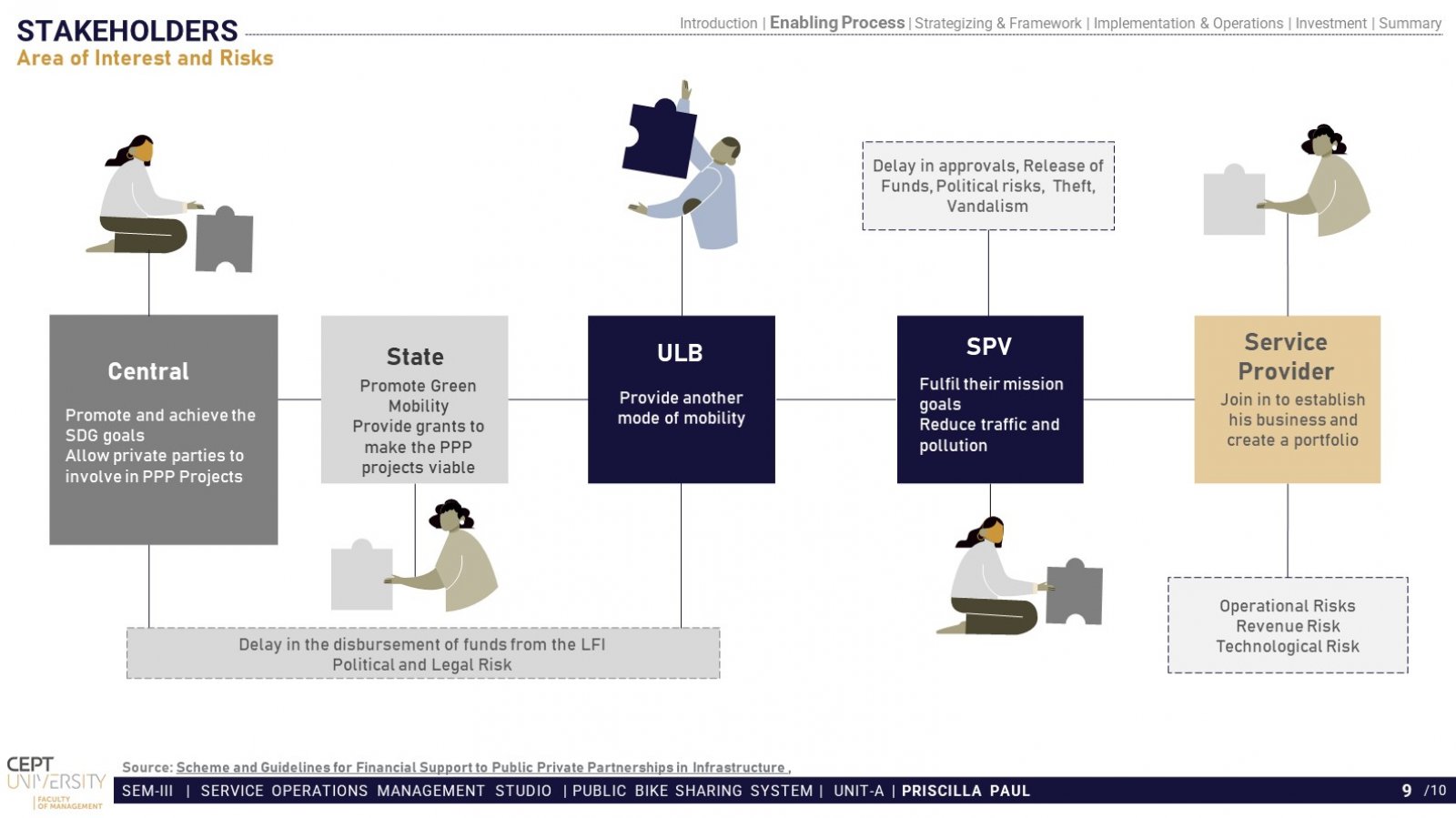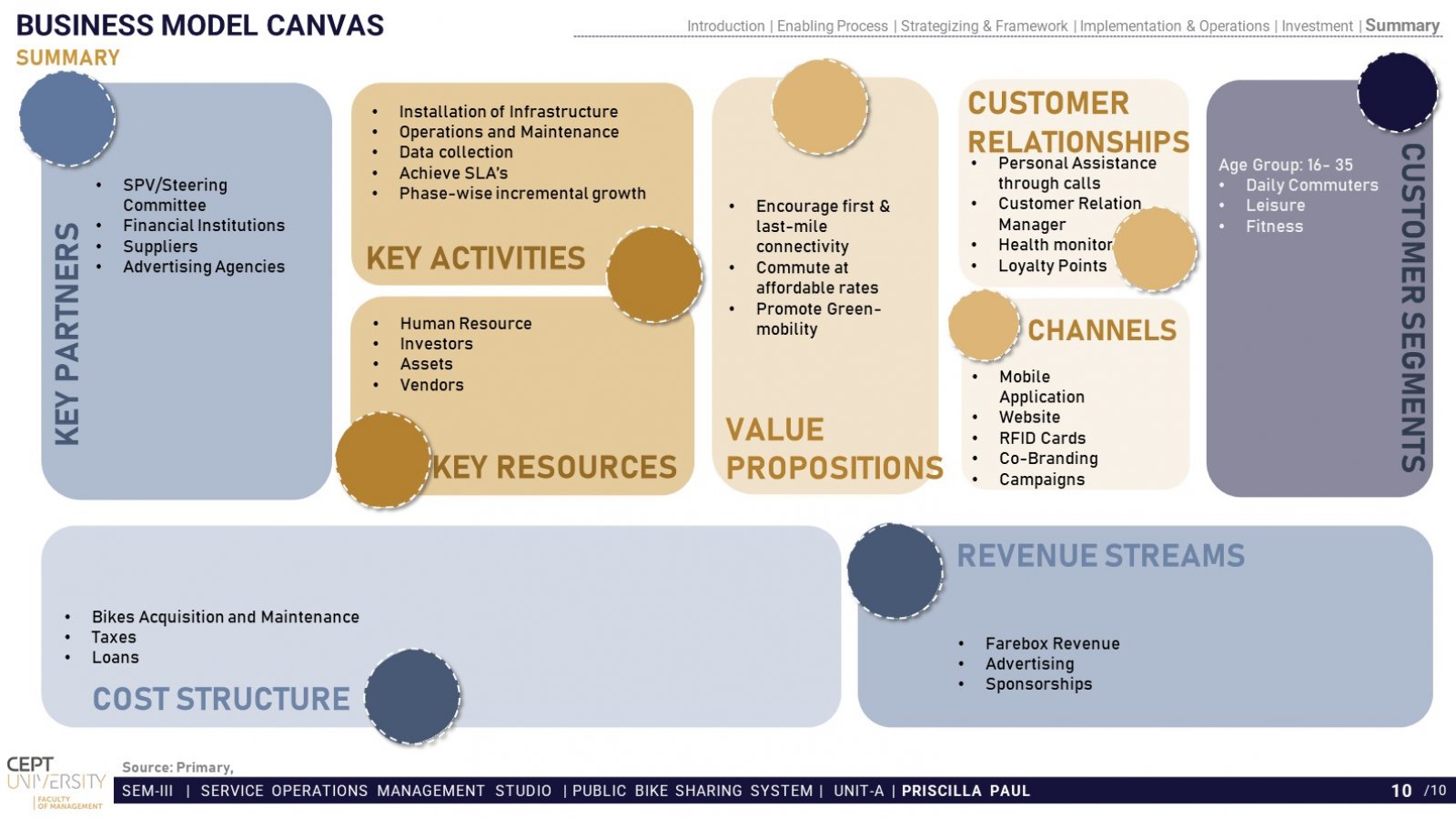Your browser is out-of-date!
For a richer surfing experience on our website, please update your browser. Update my browser now!
For a richer surfing experience on our website, please update your browser. Update my browser now!
The procurement model gives a holistic vision for the service operations of a Public Bike Sharing System. The public-private partnerships ensure that the system is viable with Viability Gap Funding. The contract is given for 5+2 extendable years and envisions starting at a minimum of 500 pedal cycles and growing exponentially at the end of 5 years. This system follows a supply-induced demand and aims to increase the ridership by 200%. Once the Service Level Agreements are satisfactory, the next phase of pedal assist cycles commences. This system can be scalable and replicable in Indian cities and help PBSS grow.
View Additional Work